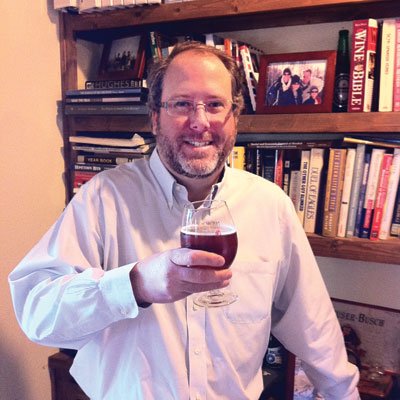
Harry Schuhmacher is the editor and publisher of Beer Business Daily. He tweets at @beerbizdaily
Recently, my young friend Alyssa and I had a date for that now ubiquitous wonderful American tradition—Sunday brunch. Where to go? We considered and discarded a half-dozen places before deciding on Freetail Brewing Co., a pizza-centered brewpub and production brewery here in San Antonio. This was the choice even though my dining companion was on the record about her dislike of beer. Still, we went, had a nice lunch, and when she tasted my Local Coffee Stout, she said, “Wow, that’s really good. Get me one.”
Back in the day, when you wanted to start a brewery, you typically rented space in the cheapest, seediest industrial part of town, built the brewery, signed up distributors and courted retailers, and started selling beer to an admiring and thirsty public. Where legal, you might’ve added a little hospitality area where people could try your beers.
More and more today that model is ass-backward. With shelves getting crowded and it becoming harder to sell beer outside of your community, the “taproom first, packaging brewery later” model seems to be the one to adopt.
For Scott Metzger, the owner of Freetail Brewing Co., this model was forced upon him before it became de haut en bas due to the stringent laws in Texas at the time, which prohibited breweries with taprooms from selling off-premises.
“I thought, well I just do what Sam Calagione [of Dogfish Head] did in Delaware and change the law,” he says. “It was actually part of my business plan.” But what he thought would take a year ended up taking four years, as it took time for politically powerful distributors in the state to catch on that this could be a good thing for overall beer consumption.
And as similar legal restraints have loosened in many states across the country, taprooms at production breweries have blossomed into a multi-million-dollar business.
And the model makes sense: Taprooms can be very profitable. As Scott tells me, “In some ways I was lucky, because if I had tried to build a packaging brewery first, my odds of succeeding would’ve been much lower. The brewpub was profitable almost immediately, and it allowed us to show we were a real and thriving business when it came time to raise money for the packaging brewery.”
So profitable, in fact, that it has caught the attention of the world’s largest brewery, Anheuser-Busch InBev. Every brewery recently purchased by AB InBev has a thriving taproom business, and that’s not an accident. The Brewers Association estimates that taprooms can make as much as $400 a keg in gross profit.
But it’s not just about profitability. Meg Gill, president of Los Angeles’ Golden Road Brewing Co.—which was recently purchased by Anheuser-Busch—says it’s also about the “experiential marketing.”
“Think about the marketing ROI of taprooms,” she says. “Bringing people in to have an amazing experience with your beers—and pairing them with great food in some cases—it’s the best way to build long-term equity. It’s marketing that you actually make money on.” Like Metzger, she says that back in leaner days, her taprooms/pubs “paid for the expansion of our packaging brewery. It’s a lot easier going to a bank and asking for money when your pubs are making you profitable.”
Then she drops the greatest reason for a taproom, and I ask you to think of my friend Alyssa. “Taprooms and brewpubs provide a higher conversion rate of non-beer drinkers to beer drinkers than any other form of marketing, in my view. If somebody is watching a Bud Light or Miller Lite ad on TV who doesn’t drink beer, they’re probably not going to rush out and buy beer. But if you get that same person into your pub with their friends and they try a nitro stout and they love it, you’ve just created a new beer drinker.”
But not everybody is thrilled about the popularity of taprooms. For one thing, it places brewers in direct competition with the on-premise retailers who are also their customers, which can create some tension. John Taylor, president of J.J. Taylor, a large distributor in Florida, says, “Cigar City is the largest on-premise beer bar in their market.” How does that make the pub down the street feel? In markets like San Diego, Portland and Minneapolis, brewery-owned taprooms dominate the on-premise beer landscape. Taylor estimates that 20 percent of on-premise beer sales in the Twin Cities are through taprooms.
There are also internal industry fears about maintaining a level playing field. There’s a reason the three-tier system was put into place: to prevent the pre-Prohibition domination of the industry by a few well-funded players. With AB InBev increasingly buying both craft breweries with taprooms and distributorships as laws are relaxed, we are again seeing a dominate player reign in all three-tiers, which could eventually provide fewer avenues to market for smaller craft brewers than an independent three-tier system.
But that didn’t stop Alyssa from having two more coffee stouts.
Harry Schuhmacher
Harry Schuhmacher is the editor and publisher of Beer Business Daily. He tweets at @beerbizdaily

I like the brewery’s here in the northwest. They are no way acknowledged for the wide variety that they have. Not only do they have the beers but also Cider’s, root beers, and kumbucha.